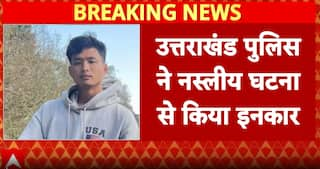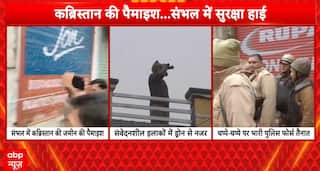Explained: What Is A Leap Second? Know Why The World Has Voted For It To Be Scrapped
In order to keep official clocks in sync with Earth's rotation, 'leap seconds' can be added after thorough analysis. However, a decision has been made to put the practice on hold from 2035.

Did you know that recently, Earth has been spinning on its axis faster than usual? Earth does not take exactly 24 hours to complete one full rotation on its axis.
In order to keep official clocks in sync with Earth's rotation, 'leap seconds' can be added after thorough analysis. However, the world's foremost meteorology body has decided to put this practice on hold from 2035, Nature reported.
Representatives of governments worldwide at the General Conference on Weights and Measures (CGPM) outside Paris made this decision on November 18.
They decided that from 2035, or possibly earlier, astronomical time, known as UT1, which is determined by Earth's rotation, will be allowed to diverge by more than one second from Coordinated Universal Time (UTC), which is based on the steady tick of atomic clocks.
The practice of adding leap seconds to clocks started in 1972. Since then, a leap second has been added to UTC whenever the two time systems drift apart by more than 0.9 seconds.
What exactly are leap seconds? And how are UT1 and UTC different from each other?
Leap seconds
Though a difference of a few milliseconds between UT1 and UTC do not seem to make any difference, they can add up over the years and cause our clocks to go out of sync with Earth's spin. This is why leap seconds have been used. A leap second can be added or subtracted to modern clocks to synchronise them with Earth's rotation.
The system of leap seconds was introduced in 1972, and so far, there have been 27 leap seconds. A positive leap second adds a second to our clocks, while a negative leap second will subtract a second from our clocks. So far, only positive leap seconds have been used.
The last time a leap second was added to our clocks was in 2016.
The reason why only positive leap seconds have been added so far is that the Earth was rotating slower than usual till 2019. On March 22, 2019, the solar day was 1.68 milliseconds more than 24 hours. This was the longest day of 2019.
When we say there are 24 hours in a day, we are referring to a solar day, which is the time taken by Earth to complete one rotation so that the Sun appears in the same position in the sky. However, in reality, a solar day is not exactly 24 hours.
To compensate for the fact Earth was spinning slower than usual, positive leap seconds were used.
In 2020, the average solar day length was 24 hours, according to timeanddate.com. July 19, 2020 was the shortest day of that year. The day was 1.47 milliseconds short of 24 hours.
Since 2021, Earth has been spinning faster than usual. The average solar day length in 2021 was 0.18 milliseconds short of 24 hours.
Since Earth is spinning faster than usual, timekeepers had thought of using negative leap seconds for the first time. In other words, they thought of subtracting leap seconds from our clocks to synchronise them with Earth's rotation. However, leap seconds have now been scrapped.
Difference between UTC and UT1
Universal Time (UT or UT1) is the time standard based on the average speed of Earth's rotation, and is used by astronomers and timekeepers to express mean solar time. Mean solar time is the solar time that would be measured by observation if the Sun travelled at a uniform apparent speed throughout the year, rather than a slightly varying apparent speed that depends on the seasons. In reality, the Sun travels at a slightly varying apparent speed.
International Atomic Time is the super-precise time scale calculated by a network of 400 ultra-precise atomic clocks around the world, including in Australia. Universal Time is compared with International Atomic Time.
The magnitude of the difference between the International Atomic Time and Universal Time is added or subtracted to 24 hours. If the International Atomic Time is greater than the Universal Time on a particular day, the magnitude of the difference is added to 24 hours. If the International Atomic Time is less than the Universal Time on a particular day, then the magnitude of the difference is subtracted from 24 hours. This practice is necessary because the length of the solar day or astronomical day varies by a tiny amount each day.
The Coordinated Universal Time (UTC), set to our time zone, governs the time we see on our computers. The UTC is based on International Atomic Time.
According to an article published by ABC News, Fred Watson, an Australian astronomer, said that Earth is not just a solid ball that is spinning, but has liquid in its core, on the surface, and is surrounded by an atmosphere.
Due to the tug of the Moon, Earth has been slowing down by about three milliseconds per day, per century, the article said.
Why leap seconds are being scrapped
In the article, Watson explained that leap seconds are introduced to keep the atomic clocks and the astronomical clocks together. However, if a negative leap second is introduced, it would mean that our clocks skip one second, which could create problems for IT systems.
Meta and Google are among the technological companies that have called for leap seconds to be scrapped.
In a blog post, Meta wrote that the impact of a negative leap second has never been tested on a large scale, and that it could have a devastating effect in the software relying on timers or schedulers. The company also said that in any case, every leap second is a "major source of pain" for people who manage hardware infrastructures.
Meta stated that they believe that the current level of 27 leap seconds will be enough to get us through the next millennium.
According to the Nature article, leap seconds are not predictable, because they depend on Earth's natural rotation, and disrupt systems that are based on precise timekeeping. Georgette MacDonald, director-general of the Meteorology Research Centre in Halifax, Canada, said stopping the adjustments is a "leap forward" for researchers who work on time and frequency, according to the article.
Macdonald added leap seconds can wreak havoc in the digital age.
The CGPM has proposed that no leap second should be added for at least a century. This will allow UT and UTC to go out of sync by about one minute. The CGPM, which also oversees the International System of Units (SI), plans to consult with other international organisations to decide by 2026 on what upper limit to put on how much the two time systems should be allowed to diverge by.
While representatives from Canada, the United States and France were among those at the CGPM who called for the leap second to be scrapped before 2035, Russia voted against the proposal, because it wants to push back the date to 2040 or later to deal with technical issues in its satellite-navigation system, GLONASS (Global Navigation Satellite System).
According to the Nature article, the Russian system incorporates leap seconds. Meanwhile, others, including the GPS satellite, already effectively ignore them.
The decision to scrap leap seconds from 2035 means that Russia might need to install new satellites and ground stations, according to Felicitas Arias, former director of the time department at the International Bureau of Weights and Measures (BIPM) in Sèvres, France.
Elizabeth Donley, who leads the time and frequency division at the National Institute of Standards and Technology in Boulder, Colorado, said astronomers who rely on astronomical time to align their telescopes will also need to adjust for the change.
Donley explained that different organisations handle the leap second differently. For instance, Google 'smears' out the extra second over a 24-hour period, creating an ambiguity between time sources of as much as half a second.
In the long term, Earth's rotation is slowing as a result of the pull of the Moon. However, a speed-up since 2020 has made the issue more pressing. This is because, for the first time, a leap second might need to be removed, rather than added.
Since Earth's rotation was slowing before 2020, the coordinated universal time has only ever had to slow by a beat to wait for Earth, not skip ahead to catch up with it.
According to the article, there is a chance that the International Telecommunications Union (ITU) could prevent plans to make the switch in 2035. Arias said the ITU could argue that the time is not right to make the change.
Will the removal of leap seconds affect the world?
It is believed that most people will feel no effect from the loss of the leap second. In the future, meteorologists might find more elegant ways than the leap second to realign coordinated universal time and astronomical time.
Macdonald said that by the time the difference becomes significant, "our ability to reconcile it will be better than our ability is right now".
She said another option is that when the difference becomes big enough, countries could permanently shift their legal time zone by one hour.
Related Video
Southern Rising Summit 2024: How Important is Self-Awareness? Insights from Anu Aacharya | ABP LIVE






































